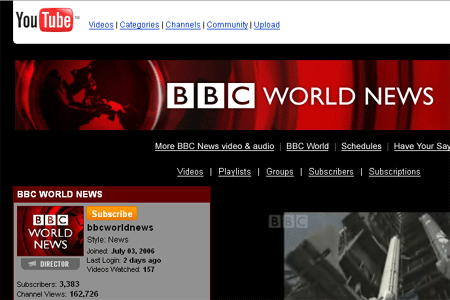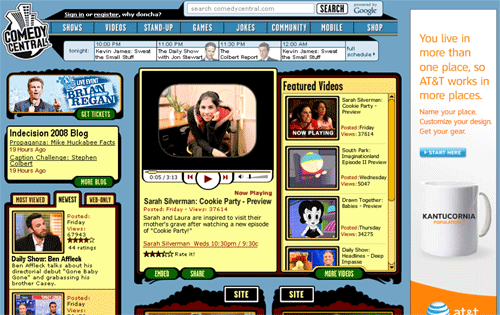 The international component of the BBC, BBC World News has established a presence to non-UK web audience on that internet video service you may well have heard about — YouTube. According to their website: “BBC World is the BBC’s commercially funded, international 24-hour news and information channel, broadcast in English in more than 200 countries and territories across the globe.” With this mission in mind, they are likely more willing to take some risks in other areas.
The international component of the BBC, BBC World News has established a presence to non-UK web audience on that internet video service you may well have heard about — YouTube. According to their website: “BBC World is the BBC’s commercially funded, international 24-hour news and information channel, broadcast in English in more than 200 countries and territories across the globe.” With this mission in mind, they are likely more willing to take some risks in other areas.
The site it clearly branded, and features news stories produced for their television outlets reformatted for YouTube. Some of these news bits are the harder hitting sort, including their most-viewed clip, an interview with Ethiopian Prime Minister Meles Zenawi to the lighter material about living ‘green.’
Views of the clips vary a great deal, with the videos with high-profile figures leading the pack. The Zenawi clip, for example, has garnered 26,673 views as of this writing. All but one of the top 15 clips have 1,000+ views, with the rest settling into the predictable long-tail curve.
26,000 isn’t stellar by many measures — my decidedly un-newsworthy video of an old Sony CD player has over 55,000 views.
Perhaps a great number of views is not what they are after. As with any established broadcast entities in this space, any experimentation should be viewed as a positive move. If it does not work, BBC World News will face neither great fiscal losses nor catastrophic image degradation.
[ Since the BBC has embedding disabled, I shall leave you with the clip of my Sony CD Player: ]









